Life Under A Microscope (Microorganisms) Introduction
- You have studied about the flowering plants in earlier classes. These plants have root, stem, leaves, flowers, fruits, and seeds.
- They are green in color and make food for all animals. You might have seen mushrooms during the rainy season in the gardens. These are also plants, although they are not green in color.
- These are examples in which plants are quite big and can be seen with the naked eye. Is it true for all living things? Are there any other types of living things? Let us find answers to the above questions in this chapter.
Read And Learn More: NEET Class7 Biology Notes
Micro-Organisms
- The water, air, and soil around us are all full of living organisms. These organisms are very small and are not visible to the naked eye.
- Some cause diseases and are sometimes called germs. However, most are harmless. Today scientists call these small living things microbes or microorganisms.
- Most micro-organisms are too small to be seen without the aid of a magnifying glass or a microscope.
- Microorganisms are minute living organisms that cannot be seen with the naked eye. A magnifying glass or a microscope is needed to see them.
- The scientists who study micro-organisms are called microbiologists. The field of study is called microbiology (“micro” means small).
- A feature shared by all these microorganisms is that they are very hardy. Under unfavorable environmental conditions, they form a hard outer covering called the cyst. Consequently, they can survive under extreme temperature conditions and dryness..
“parts or microscope “
2. Kinds Of Micro-Organisms
Major kinds of micro-organisms include:
- Bacteria,
- Fungi,
- Algae,
- Protozoans, And
- Viruses.
Viruses are the smallest of all micro-organisms. They, strictly speaking, cannot be grouped along with living things.
- They lie on the borderline separating the living things from the non-living things. Viruses lack a cellular structure (a non-living feature) but can grow only on other living cells (a living feature).
- Microbiology is subdivided into a number of diverse fields, based on the kind of organisms under study.
- Bacteriology is the study of bacteria, Virology is the study of viruses, Protozoology is the study of protozoans, Phycology is the study of algae, and Mycology is the study of fungi.
- These micro-organisms, in structure, may be unicellular (consisting of only one cell) or multicellular (many-celled).
“types of microscopes “
Unicellular Micro-Organisms
1. Plant
- Algae: Chlamydomonas, Chlorella, desmids, and diatoms,
- Fungi: Yeast
- Bacteria
2. Animals
- Protozoa — Amoeba, Euglena, Paramecium (also written as Paramoecium)
Multicellular Micro-Organisms
- Algae – Volvox, Spirogyra, Nostoc
- Fungi – Bread mold, Aspergillus, Penicillium
3. Habitat Of Micro-Organisms
- Microorganisms are found all around us in all types of places – in the air, in water, in soil, on plants, inside our bodies, and in the bodies of all other animals.
- They can survive in extremely harsh environmental conditions like hot springs, desert soil, saline water, ice-cold water, and marshlands. They are also found at the bottom of the sea.
- Microorganisms are also present in dead and decaying organic matter. These organisms help in the release of minerals into the soil after the death of living organisms by decomposing them.
- Some microorganisms live as parasites either outside or inside the body of other organisms. The nose, throat, mouth, and intestine of many animals, and even human beings are inhabited by a number of micro-organisms.
- Some microorganisms, however, cause diseases. For example, malaria is caused by a protozoan, Plasmodium, which lives as a parasite in the blood of human beings.
4. Bacteria
- Man’s relationship with bacteria is a very interesting one. We all know that many bacteria are harmful.
- Diseases such as typhoid, cholera, diphtheria, pneumonia and all infections that occur in open wounds are each caused by a particular kind of bacteria.
- Yet, without the action of other types of bacteria, life would be impossible on Earth. In fact, man actually cultivates certain bacteria because he needs and uses them.
- Bacteria are probably the most common forms of life on earth. They are also among the simplest and smallest living things.
NEET Biology Class 7 Life Under a Microscope Notes
Size
A bacterium generally consists of only one cell. Sometimes, they may exist as a chain or a group of cells. They vary in size from 0.2 to 100 microns.
A single drop of sour milk may contain 100,000,000 bacteria. Bacteria are much smaller than protozoa, algae, or fungi.
1 micron = 1/1000 of a millimeter (mm)

Shape
Bacteria have three basic shapes, which take their names from Latin words. These are:
- Rod-shaped called bacilli (singular bacillus) meaning “little rod”; examples – are Bacillus, Lactobacillus, and Pseudomonas.
- Ball-shaped called cocci (singular coccus) meaning “berry”; examples – are Micrococcus, Streptococcus, and Sarcina.
- Spiral or corkscrew-shaped called spirilla (singular spirillum) meaning “spiral”; examples – are Vibrio, Treponema, and Camphilovector. Some of these bacteria show movement by means of filaments called flagella which protrude from them.
“microscope parts and functions “
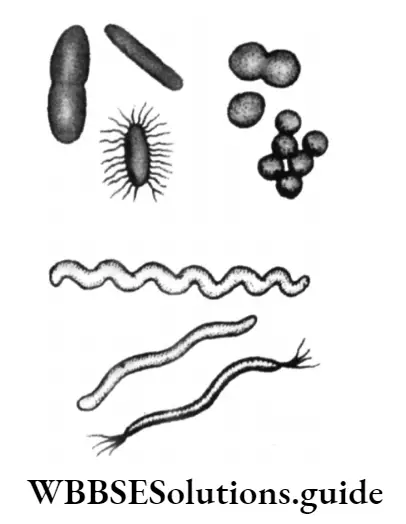
Habitat
Bacteria are found everywhere. Some live in the mouths, noses, and intestines of animals and people. Some live on fallen leaves or animal waste. Still others live in water, milk, dust, and soil.
Structure
- Bacteria are unicellular micro-organisms,
- They have a primitive cell structure,
- They lack a well-organized nucleus. The nuclear material is present in the cytoplasm without a nuclear membrane.
- Membrane-bound cell organelles are lacking. Plasma
- The cell wall is present. membrane
- Cytoplasm is granular, viscous, and colloidal in nature containing 70% – 85% water.
- In some bacteria, a slime layer or capsule is present on their cell surface. These are secreted by the bacterial cells.
- When the secreted material is diffused (not compact), it is called a slime layer.
- But when the material is compact, it is called a capsule. Disease-producing bacteria are often capsulated.
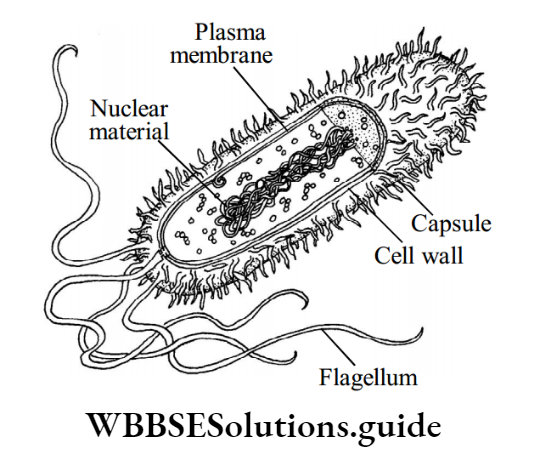
Life Under a Microscope NEET Notes
Nutrition
On the basis of nutrition, bacteria are of two types –
- Autotrophs can synthesize their own food, and
- Heterotrophs which depend on food synthesized by other organisms.
Autotroph bacteria may be phototrophs which utilize energy from sunlight, and chemotrophs which utilize energy of inorganic compounds of hydrogen, ammonia, and iron. Heterotroph bacteria may be saprophytic or parasitic.
Are bacteria plants or animals?
- Bacteria have features of both plants and animals. Scientists have never entirely agreed on how to classify bacteria.
- Bacteria lack chlorophyll, the green coloring matter that most plants need to make their own food.
- In their use of outside sources of food, bacteria seem like animals. But in their sizes, shapes, and general living habits most bacteria resemble lower plants such as fungi and algae.
- Many scientists classify bacteria and other micro-organisms that have characteristics of both plants and animals as protists meaning first things.
Oxygen Use
- Like all living things bacteria need oxygen to burn up food materials for energy. Bacteria requiring oxygen for their growth are called aerobes.
- Most bacteria take oxygen from the air, but some get oxygen by breaking down chemical compounds in their food.
- For example, bacteria that Parent cells ferment milk (causing it to turn sour) get oxygen from milk sugar.
- Some kinds actually cannot live in the presence of oxygen. These bacteria are called anaerobes, meaning “without air”.
Reproduction
- Bacteria generally reproduce by binary fission, that is, a bacterium divides into two, and so on
- The rate of reproduction is very high under favorable conditions of nutrition, temperature, and moisture; division may take place every 10 to 40 minutes. This means that within a few hours, there could be millions and millions of bacteria.
- But, there is not enough food or moisture in any one place to support such numbers. Competition for food and exposure to harmful conditions keeps the bacteria in check.

“diaphragm microscope “
Harmful Bacteria
- Certain bacteria cause diseases in people and animals. Some of the common human diseases caused by bacteria are cholera, diphtheria, pneumonia, tetanus, and tuberculosis.
- Other bacteria produce diseases in plants. Black rot in cabbage and fire blight in pears are caused by bacteria.
- Food is spoiled by other bacteria, such as those that cause meat to rot. Some bacteria damage food in unseen ways.
- For example, botulism, a dangerous disease, is caused by a poison-producing anaerobe in improperly canned foods.
- Another bacterium, Salmonella, found in contaminated meat and eggs, causes a severe digestive disease.
- Bacteria also spoil milk if it is not boiled. During summer, it becomes necessary to warm the milk several times or store it at a low temperature.
Useful Bacteria
Most bacteria are useful. Some are even necessary to life. Others have been put to work for a specific purpose.
1. Bacteria in the Cycle of Life: Bacteria cause the decay of dead plants and animals, both on land and in water. Without such bacteria, the earth would soon be covered with material from dead organisms.
- There would have been a shortage of carbon and nitrogen compounds which are so essential for living organisms.
- As they take in food, bacteria break down plant and animal tissues into simple chemical substances.
- These substances are then restored to the soil, water, and air in forms that can be used for nourishment and growth by living plants and animals.
- Bacteria also play an important part in the digestive processes of animals. There are many bacteria in the human intestine. As the bacteria eat, they break down foods. At the same time, they make certain vitamins, which the body then uses.
- The bacteria inside the stomach of grass-eating animals can break down cellulose, the stiff wall of green plant cells. By enabling cows to digest grasses, bacteria play a part in the production of milk.
2. Bacteria in Agriculture:
- All living tissues of plants as well as animals need nitrogen, the gas that makes up almost 80 percent of the air.
- Some bacteria, called nitrogen-fixing bacteria, are the only organisms that can take nitrogen from the air.
- These bacteria live in the soil. They change nitrogen into substances that plants can use. They live in symbiotic partnership with roots of plants such as peas and beans and form root nodules.
Note: The bacterium Rhizobium is found in the root nodules of plants belonging to the pea family.
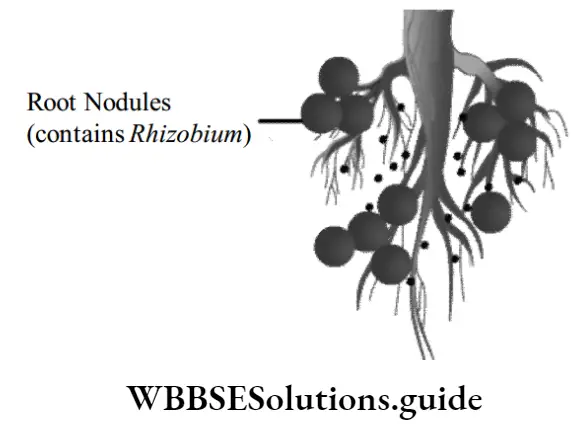
NEET Biology Life Under a Microscope Important Notes
Bacteria in Industry: The ability of bacteria to break down organic compounds into simpler products has several commercial applications.
Retting of Fibres: Fibres from certain plants are obtained by submerging the stems in water for variable periods. The fibers are acted upon by the bacteria growing in water, and the fibers are set free from the stem.
Curing of Cheese, Tobacco, and Tea: The flavor of cheese, tea, and tobacco depends upon the type and degree of fermentation and putrefaction that it has undergone. The process is known as curing and is brought about by different species of bacteria.
Production of Vinegar: Ethyl alcohol is converted into acetic acid (vinegar) by the action of aerobic bacteria, like Acetobacter.
Formation of Curd (dahi): Making of curd is a process in which the lactose (milk sugar) of the milk is converted into lactic acid by the action of certain bacteria (mainly Lactobacillus)
Production of Fuel: We can produce methane from the manure (solid wastes) of cattle with the help of anaerobic bacteria. Methane is an inflammable gas and a valuable fuel.
It is used for heating homes and factories and for other energy needs. When methane gas is produced, protein and minerals in the manure are removed and can be used as fertilizers in fields.
Treatment of Sewage: Sewage is the wastewater from kitchens, toilets, and industries.
“stage microscope function “
Treatment of sewage consists of three steps:
- Primary treatment
- Secondary treatment
- Tertiary treatment
Primary treatment is a mechanical process by which large suspended and floating materials are removed.
Secondary treatment is a biological process and involves the use of bacteria and other microbes.
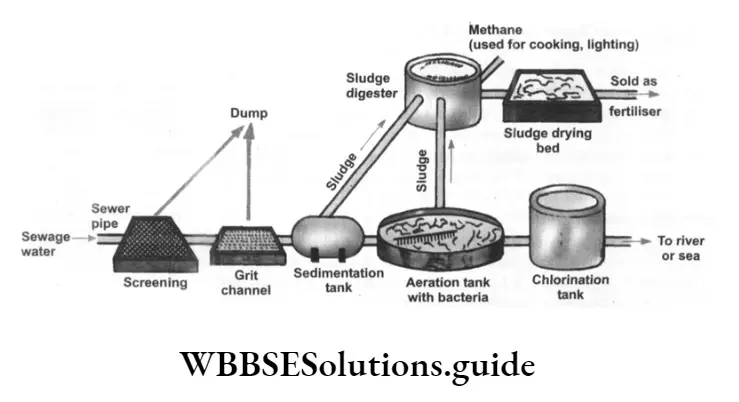
Tertiary treatment consists of advanced biological, chemical, and physical processes. It aims at further purifying wastewater and its recycling.
- Chlorination, to kill germs, is done during tertiary treatment. Let us discuss the secondary treatment of sewage in more detail.
- As mentioned above, secondary treatment involves microbial activity. Aerobic bacteria are used for this activity.
- The bacteria are put in large sewer tanks through which oxygen (air) is also pumped. The bacteria, in the presence of oxygen, bring about rapid decomposition.
- Undigested sewer is then transferred to another anaerobic digestion tank.
- Aerobic bacteria are left behind. In the second tank, anaerobic bacteria cause digestion and produce a mixture of gases. The main gas produced is methane.
- The mixture of gases produced is called biogas which is used as a fuel.
- The sludge left after digestion of sewer by aerobic and anaerobic bacteria is rich in nitrogen. After drying, it is used as manure.
Other Uses of Bacteria: Valuable medical, agricultural, and industrial products can be prepared from bacteria. This involves changing certain characteristics, or traits, that are inherited.
Units of heredity, called genes, pass on traits from generation to generation. Genes are made up of long, twisted chains of a chemical called deoxyribonucleic acid (DNA).
To change particular traits of an organism, scientists make changes in its genes, using genetic engineering. This method is also called recombinant DNA and gene splicing.
For example, gene splicing is used to change bacteria so that they produce human insulin. This substance is extremely important in regulating the body’s use of sugar and other nutrients.
The insulin made by bacteria is used to help diabetics – people whose bodies produce little or no insulin. To change the genes of bacteria, scientists remove a small section of DNA.
They replace it with a section of DNA taken from human cells. This human DNA controls the making of insulin.
The bacteria follow the “instructions” of the transferred human DNA and produce human insulin. When a changed bacterium divides, each of the newly formed bacteria is able to make human insulin.
“microscopy notes “
Fungi
All of you would have seen a mushroom. A mushroom is a familiar kind of fungus. It belongs to a kingdom of non-green living things called fungi.
Observations:
- Blue-green patches on the surface of a rotting orange.
- Greyish-white patches on stale bread, old pickles, and jams. Hyphae of a fungus
- Greenish patches during the rainy season on old shoes and damp shoes. These patches are all made of different types of fungi
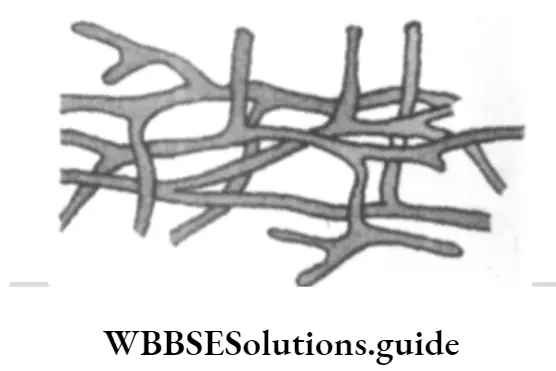
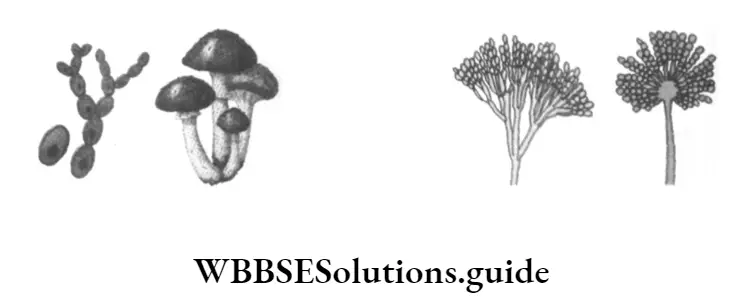
Best Short Notes for Class 7 Biology Life Under a Microscope
Structure
Fungi are both unicellular and multicellular. Multicellular forms consist of long threads called hyphae’, that grow close together. Hyphae collectively form a highly interwoven compact mass called mycelium.
The three common types of fungi are –
- Yeasts, which are unicellular,
- Molds, which are multicellular, for example, common bread mold, and
- Mushrooms are also multicellular. Yeasts and molds are microscopic organisms, while mushrooms are quite big and macroscopic.
Fungi — Plants or Animals
Fungi are often classified as plants. But fungi differ from plants in many ways. One difference is that fungi are non-green (lack chloroplasts and chlorophyll) and so cannot make their own food. Like the plants, however, they possess cell walls.
Feeding
The absence of chlorophyll means that fungi cannot synthesize food. Fungi are either saprophytic or parasitic.
The parasitic ones live on or in the tissues of another living organism, the host, absorbing nourishment from its body.
Some of the most devastating diseases of crops are due to parasitic fungi, e.g., potato blight and wheat rust.
The saprophytes derive their food from dead and decaying materials. Examples are the molds that develop on stale, damp food and the many fungi that live in the soil and feed on the humus there.
“microscopy notes “
Reproduction
Reproduction takes place both by sexual and asexual means. Asexual reproduction may be through binary fission, budding, regeneration of fragments, or through spore formation. Spore formation is a very common method.
Fungi produce a great number of tiny dust-like cells called spores. These spores are released into the air.
If they land in a suitable place, they grow into new hyphae. Yeast commonly reproduces by budding, whereas common bread molds, by spore formation
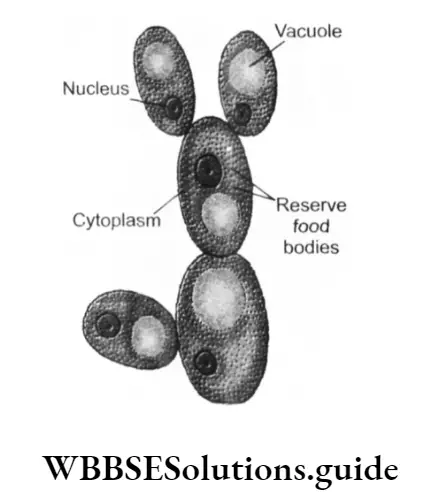
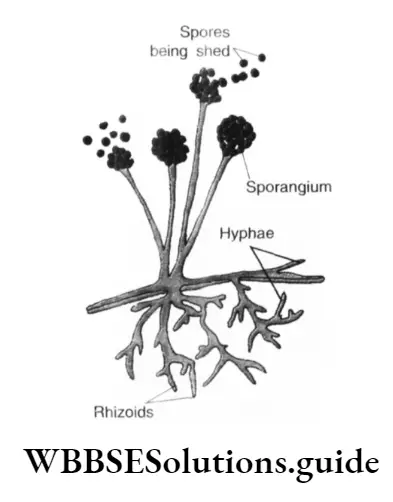
Life Under a Microscope Class 7 NEET Key Concepts and Summary
Yeast belongs to the genus Saccharomyces. It is a unicellular, saprophytic fungus. It may be spherical, elliptical, or cylindrical in shape. It has a cell wall, cell membrane, a distinct nucleus, a large vacuole, and numerous granules, and fat globules.
Yeast cells can be stored in dry form for up to 4 years. It, however, gets destroyed at a temperature of 60°C.
The common mode of reproduction is asexual — budding. Sexual reproduction is also reported. Common species of yeast – Saccharomyces cerevisiae.
Saccharomyces grow rapidly in sugary media, like sugarcane juice, grapes, and nectar of flowers.
Due to fermentation, ethyl alcohol and CO2 are produced. Fermentation of fruits and fruit juices by yeasts makes their taste unpleasant and thus spoils the foods and food products.
“microscopy notes “
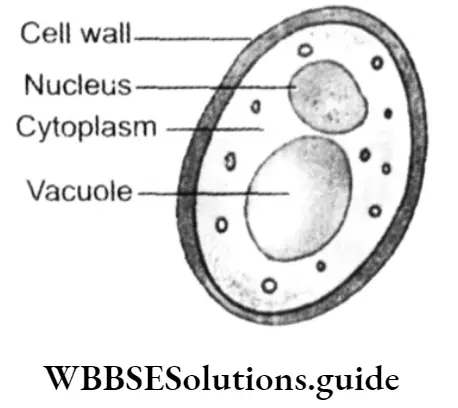
Harmful Fungi
Some fungi damage food products, paper, leather, paint, and textiles. Some fungi cause diseases in crops (for example Puccinia and Ustilago), in human beings (fungi like Microsporium, and Arthroderma), and in animals (Dactylella and Arthrobotrys). One beautiful mushroom, Amanita, contains a poison deadly to humans.
Useful Fungi
- Some fungi, such as mushrooms are eaten raw or cooked.
- Yeasts being rich in amino acids and proteins are an important source of food for humans and farm animals.
- Some fungi produce antibiotics that are used to treat infections and diseases. For example, the antibiotic penicillin is obtained from a fungus, Penicillium.
- Another fungus Aspergillus is used for producing large quantities of citric acid, used in the soft drink industry.
In bread-making, yeast is added to the uncooked dough to make the dough “rise”. The dough rises due to the production of carbon dioxide (because of the respiration of yeast) in the dough.
The bread can now be baked. The heat of baking drives off the carbon dioxide, making the bread porous and light.
- Yeast is also used in the preparation of products like wines and beers from fruit juices or barley. Yeast brings about the fermentation of sugars into alcohol and carbon dioxide.
- In day-to-day household food items like idli and dosa too, yeast finds its use. For making idli and dosa, the mixture of ground rice and dal is first allowed to stand for a few hours.
- This mixture rises and becomes sour, due to the growth of yeast cells.
- Saphrophytic fungi break down dead material for their own food and return to the soil chemicals or nutrients for plant growth. Fungi, thus, help in the recycling of nutrients.
- Some fungi (Aspergillus and Penicillium) are added to cheese to give it a special flavor.
Antibiotics
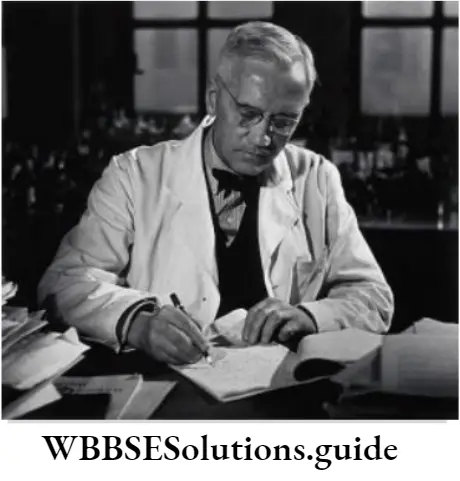
NEET Biology Class 7 Chapter 4 Detailed Notes with Explanation
- Antibiotics are chemicals that kill or stop the growth of certain kinds of microbes. They help our body to fight disease.
- The name antibiotics comes from two Greek words meaning against life. Antibiotics work only against certain forms of life.
- The development of antibiotics began with the discovery of penicillin by Sir Alexander Fleming in 1928.
- Fleming noticed that an agar plate inoculated with the bacterium Staphylococcus aureus had become contaminated with a mold. He further noticed the presence of a clear zone in the agar plate in which the breakdown of the bacterial cells had occurred.
- Detailed studies led to the isolation of an inhibitory substance from the mold. As the mold was identified as Penicillium, Fleming called the antibiotic penicillin.
- Soon other antibiotics were isolated. Some well-known antibiotics are streptomycin, gramicidin, and tetracycline. The antibiotics have been obtained from either bacteria or fungi.
“microscopy notes “
Algae
- The commonly used terms like pond scum or seaweeds in fact refer to organisms, collectively termed as algae.
- It is found floating on the surface of a pond or a lake. It also tends to develop on the sides of tanks which have not been cleaned for some time.
- These are all algae. The term algae refers to many types of aquatic, photosynthetic organisms.
- Often scientists classify these organisms along with plants, as they possess chlorophyll and distinct cell walls.
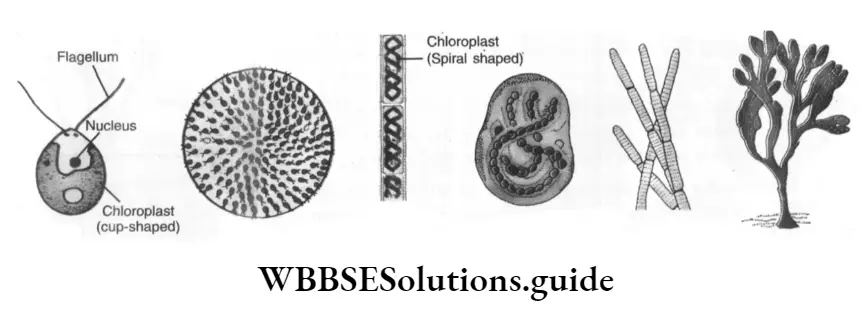
Occurrence
- Algae are aquatic organisms, found in ponds, lakes, ditches, sea shores, moist soil, and bark of trees. Some are even found in snow and hot water springs.
- They also occur symbiotically within the bodies of other living organisms, such as lichens. In structure, algae exhibit a wide variety.
- They may range from tiny unicellular microscopic forms like Chlamydomonas, and Chlorella, barely 1.0 microns in size, to multicellular giant seaweeds or kelps, several metres in length.
- Unicellular algae may be of various shapes – spherical, oval, rod-shaped, or spindle-shaped.
- Diversity in structure is much more in multicellular forms. These forms may exist in colonies (for example, Volvox) form filaments (Spirogyra), or even plant-like bodies (Fucus).
- Algae are often named after their color as green algae, blue-green algae, red algae, brown algae, yellow-green algae, and so on. The difference in their color is due to the presence of certain other pigments in addition to chlorophyll.
“microscopy notes “
Examples:
- Green algae – Chlamydomonas, Spirogyra, Chlorella, Volvox.
- Blue-green algae – Nostoc, Osdllatoria, Anabaena.
- Brown algae – Fucus, Laminaria
- Red algae – Polysiphonia
- Golden-brown algae – Diatoms
Blue-Green Algae
These are single-celled or multicellular algae (like Nostoc, and Osdllatoria), blue-green in colour.
Some cells in multicellular forms are modified to perform a special function of nitrogen fixation.
The modified cell is called the heterocyst. Blue-green algae resemble bacteria in many respects.
For this reason, these algae are also called cyanobacteria. Both have a primitive cell structure, lacking membrane-bound cell organelles and a well-defined nucleus. Reproduction in blue-green algae is commonly by binary fission or by fragmentation (asexual reproduction)
Diatoms
Diatoms are golden-brown microscopic algae, rich in marine places. These algae have variously designed bodies impregnated with glass-like silica.
They may be unicellular, colonial, or filamentous. The cell wall consists of two overlapping halves, hence named a diatom.
Diatoms after their death leave large amounts of silica deposits called diatomaceous earth. This being rough, it is used for polishing and in making filters. Examples — Navicula, Pinnularia, Cyclotella.
Note: Diatoms are known as the jewels of the plant world.
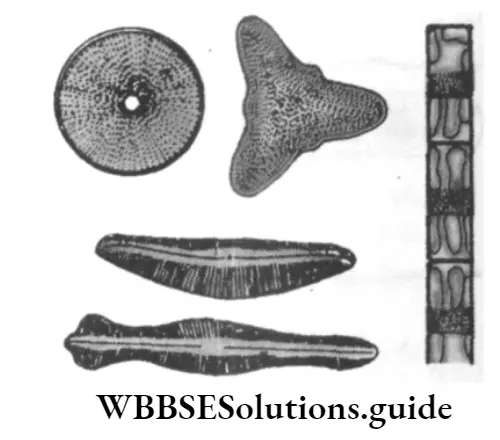
Harmful Aspects Of Algae
- Algae are generally considered to be a great nuisance by many people. They cause problems by fouling beaches and drinking water.
- Excess growth of algae also blocks the movement of water in channels.
- Some algae also produce poisons which prove deadly to fish, many smaller organisms, and even man.
“microscopy notes “
Useful Algae
- Cell walls of diatoms are a rich source of silica. Large deposits of diatom shells (diatomaceous earth) are mined and used in industry for making glass, toothpaste, filters, and polishing.
- The blue-green algae can fix atmospheric nitrogen. These algae are used to increase the soil fertility and thus function as biofertilizers.
- Being producers, algae form the first link in the food chain in all water bodies.
- Certain algae like Chlorella and Porphyra are used as food. Seaweeds are used as food in China and Japan.
- Kelp, a brown alga, is a rich source of iodine.
- An important product of agar is obtained from a red alga. This product is used in laboratory experiments for growing organisms. It is also used in the preparation of medicines, food, and cosmetics.
- Seaweeds are even used as fertilizers.
NEET Study Material for Life Under a Microscope Chapter
It is estimated that in paddy fields about 625 kg of nitrogen can be fixed in a year by these algae in one kilometer square area.
The addition of blue-green algae to barren fields increases the nitrogen and humus content of the soil. Because of the increase in humus content, the water-holding capacity of the soil is improved. The net result is that there is better growth of crops.
Protozoa
The name ‘protozoan’ is derived from the Greek words meaning “first animal.” Protozoa are one-celled living things. They live nearly everywhere on earth, in water and moist soil. In size, they range from 2 to 200 microns.
Examples: Amoeba, Paramecium, Euglena, Plasmodium, Trypanosoma.
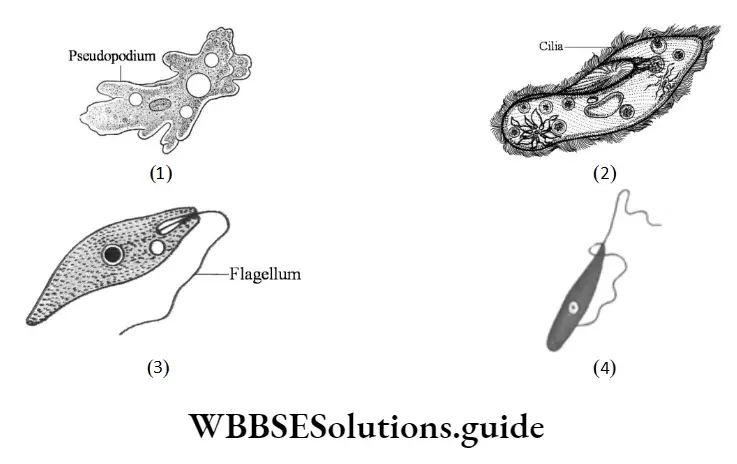
Amoeba
- Amoeba is the simplest and most common of all protozoa.
- Protozoa are often included in the animal kingdom as they do not possess a cell wall, and lack chlorophyll. They obtain their food from other living things. The parasitic forms absorb digested food from the host.
- Some forms are oval, spherical, or elongated, while others, like the Amoeba, lack any definite shape.
- A typical protozoan cell contains a definite nucleus and membrane-bound cell organelles.
- All the functions of life like nutrition, respiration, excretion, locomotion, and reproduction are carried out by the single-celled body.
- Locomotion takes place by pseudopodia, cilia, or flagella.
- Sexual and asexual reproduction in this group of organisms is complex and varied. In Amoeba, asexual reproduction is quite common. A parent amoeba cell divides into two.
- Paramecium, however, reproduces sexually as well as asexually. Two paramecia produce offspring together.
Harmful Protozoa
- Several protozoa cause diseases in man and other animals. One such kind is Entamoeba histolytica which causes amoebic dysentery in man.
- Another dangerous protozoan is Plasmodium which causes malaria in man. Plasmodium is a parasite and is transmitted by the bite of the female anopheles mosquito. The mosquito merely acts as the carrier of the parasite.
- Trypanosoma causes an infectious disease called sleeping sickness in men, cattle, pigs, and horses.
- This disease is common in some African countries. Active and encysted forms of the agent of amoebic dysentery.
Useful Protozoa
- Protozoa form an important link in aquatic food chains. They feed on algae and are food for other protists and small animals, which in turn become food for others.
- Protozoa decompose organic matter and thereby help in converting organic wastes into simpler useful soil nutrients.
- Protozoa also exist in symbiotic association with other organisms. This association is mutually beneficial to both organisms.
“microscopy notes “
Viruses — Non-Cellular Microbes
When we suffer from the common cold, the physician tells us that this is due to virus infection. What are these viruses? Viruses are peculiar – their structure is unlike all the other microbes mentioned so far.
These are not considered to be organisms at all since they do not possess a cellular organization.
They have no life until they enter another living cell. They are unable to carry out any of the typical life functions until they are inside a host cell.
Outside a host cell, viruses are like any non-living substance. They can be crystallized and stored. Viruses are, thus, obligate parasites.
The relationship between the host and the virus is known as parasitism as the virus (parasite) benefits and the host is harmed
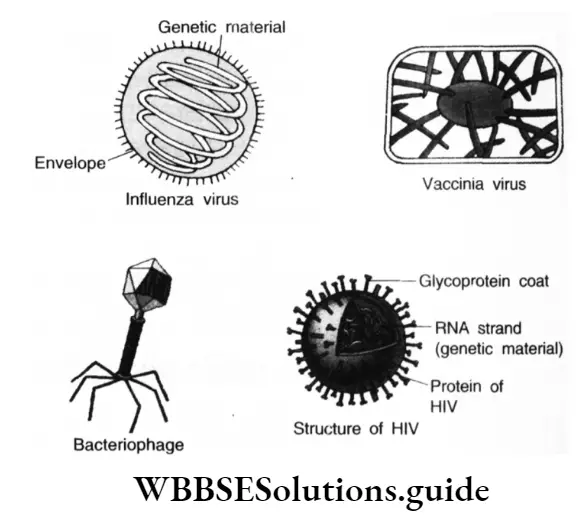
Life Under a Microscope Class 7 NCERT Notes for NEET
In size, viruses are smaller than bacteria, and cannot be seen with simple microscopes. They vary from 15μm to 275μm and can be viewed only under an electron microscope. They exhibit a wide variety of shapes.
In a virus, a small amount of genetic material (in the form of DNA or RNA) is enclosed inside a protein coat.
Viruses are generally named on the basis of (i) the host, or the disease that they produce. For example, the tobacco mosaic virus (TMV) is so named as its host is a tobacco plant, and the virus produces a mosaic pattern on the leaves.
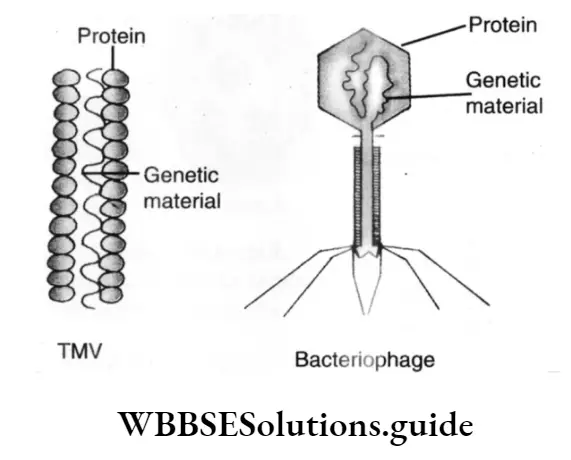
Similarly, the measles virus causes measles in humans. The virus which attacks bacteria is called bacteriophage (meaning bacterium-eater).
In humans, viruses cause measles, mumps, flu, smallpox, and the common cold. As viruses lack their own metabolism, antibiotics have no effect on them.
Conditions For Growth Of Micro-Organisms
Of all the micro-organisms, bacteria are the most abundant. They grow and multiply very fast.
The most common bacteria used in biological research are E. coli. This bacterium is found in the human intestine.
It takes about 20 minutes to double itself. Some bacteria, like Pseudomonas, reproduce about every 10 minutes.
“microscopy notes “
Some of the important factors affecting their growth are
- Temperature,
- Moisture, and
- Availability of food.
A moist and warm environment is good for bacterial growth. Growth is less when the environment is dry or the temperature is too high or too low.
Also, some bacteria require oxygen for their growth and others grow without oxygen. Oxygen-requiring bacteria are called aerobic bacteria, whereas those that grow without oxygen are called anaerobic bacteria.
Micro-Organisms And Diseases
- For thousands of years, man lived in ignorance of what caused disease.
- People had explanations and beliefs about what caused disease, the most common of which was that sickness was caused by evil spirits inside the body of the victim. Malaria was thought to be due to inhalation of “bad air”.
- Chickenpox, smallpox, and cholera were thought to be inflicted as a curse of some angry goddess.
- It was not until 1865 that science was able to prove that microbes (or germs) were the cause of diseases.
- It was Louis Pasteur who first stated the “germ theory of disease”. Through a series of elegant experiments, Pasteur proved that the microbes were present in the air.



Importance of Microscopes in Biology NEET Notes
Preventive Measures To Avoid Infection
Certain measures need to be taken to promote good health and prevent the body from catching infection and falling sick.
Such measures include:
- Eating a properly balanced diet so that the body remains healthy to fight infections.
- Drinking clean and safe water.
- Eating freshly prepared food, stored properly and kept away from flies and mosquitoes,
- Keeping the food in clean utensils and properly covered to avoid contact with flies and insects.
- Storing unused cooked food at a low temperature in a refrigerator to avoid spoilage.
- Use a handkerchief while sneezing or coughing, so that others do not get an infection.
- Putting garbage in properly covered bins. It should not be thrown in the open.
- Regular physical exercise helps in resisting infections and building up health.
- Maintaining personal cleanliness by taking the following precautions.
- Take a bath regularly with clean water.
- Keeping nails short and clean.
- Cleaning teeth after each meal and before going to bed. Otherwise, tooth decay may take place.
- Washing hands with soap before taking meals.
- Walking barefoot must be avoided. Injuries due to bacteria like tetanus, insects, and hookworms may be caused if a barefoot walk is undertaken.
- The comb and towel of other persons should not be used.
Maintaining cleanliness of the surroundings by following measures-
- Open drains, if any, should be covered.
- Drinking water should not be contaminated by bathing or washing clothes.
- Water should not be allowed to stagnate, as mosquito breeding takes place in stagnant water. Kerosene oil can be sprayed on the surface of stagnant water.
- Pollution-free environment should be maintained.
- Timely vaccination and health education are necessary to keep the body away from infections.
“microscopy notes “
Prevention Of Spoilage Of Food
- What do you use a refrigerator at home? Not only for cooling water but also for storing food items.
- These food items, if kept at room temperature, start producing a foul smell. In other words, the foods get spoilt and become unfit for consumption. This is true for both cooked and raw foods.
- Spoilage of cooked food takes place because of the action of microorganisms like bacteria and fungi.
- Uncooked or raw food is contaminated or spoilt by insects, rats, fungi, and bacteria.
- Enormous quantities of potentially useful food are thus wasted. In addition to spoilage of food, the quality of food and its nutritive value are affected.
Food Preservation
Food preservation is the answer to this problem.
There are many advantages of preserving food. Some of these are:
- Reduces food wastage by avoiding spoilage.
- Increases the storage period of foodstuff.
- Nutritive value is retained for a longer period.
- Ensures food availability in distant places and during the off-season.
Methods Of Food Preservation
1. By Sun drying: Drying in the sun reduces the moisture content of food materials. Removal of water from food materials like vegetables (spinach, cauliflower, and methi) and fruits is called dehydration.
Microorganisms cannot grow in dry conditions. Sun drying is generally used in the case of vegetables like spinach, cauliflowers, and methi leaves.
2. By Heating: Heating kills germs. Milk, at home, is prevented from spoilage by boiling.
3. By Smoking: Smoking is used for dehydrating food items like meat, fish, and their products. In this method, small pieces of fish or meat are dried with heat and smoke from the fire lit below.
4. By Salting and Sugar: Fruits and vegetables are commonly preserved by using salt or sugar.
The food items are made into jams, jellies, and pickles. In jams, sugar is used. In pickles, salt is used. Sugar and salt remove water from the cells, thereby preventing the growth of microorganisms.
Besides salt and sugar, oil and spices are also used as preservatives. These preservatives do not allow the growth of micro-organisms and thus help in preserving the food items.
5. By Refrigeration and Freezing: Cooling by refrigeration and freezing stops micro-organisms from growing and multiplying but it does not kill them. A refrigerator keeps food at about 5°C.
This keeps the food fresh for a few days. A freezer preserves food at below -18°C. This stops all microbial activity and food can be preserved for many months.
Frozen foods should be thoroughly cooked and should not be left in the open for too long, otherwise the microbes become active again.
6. By Pasteurization: Milk is preserved by this method. First, the milk is heated to kill bacteria. Next, it is cooled very fast to prevent bacteria from growing.
It is finally stored at a low temperature. This method of preservation is called pasteurization. Pasteurization kills the bacteria in milk and does not affect its flavor.
Food Poisoning
- If food is not preserved properly, it can lead to poisoning. Microorganisms like bacteria and fungi are responsible for food poisoning.
- Bacteria causing food poisoning: Salmonella and Clostridium.
- Fungi causing food poisoning: Moulds like Aspergillus and Penicillium. Food hygiene is essential for preventing food poisoning.
Note: The French scientist, Louis Pasteur, named the method of preservation, named after his pasteurization.
